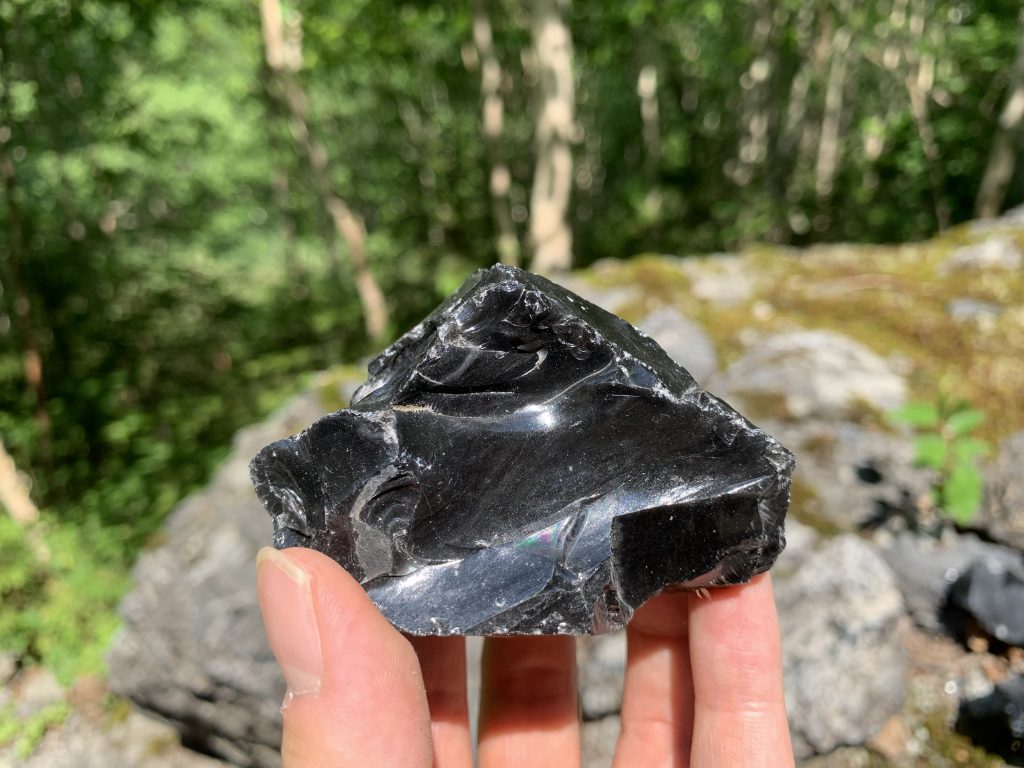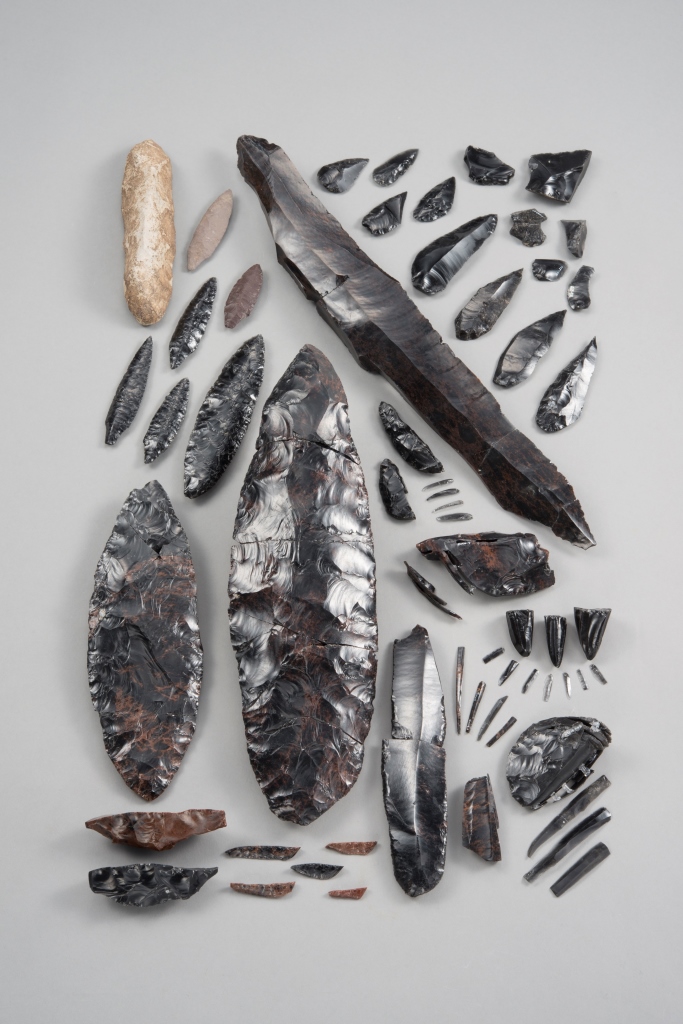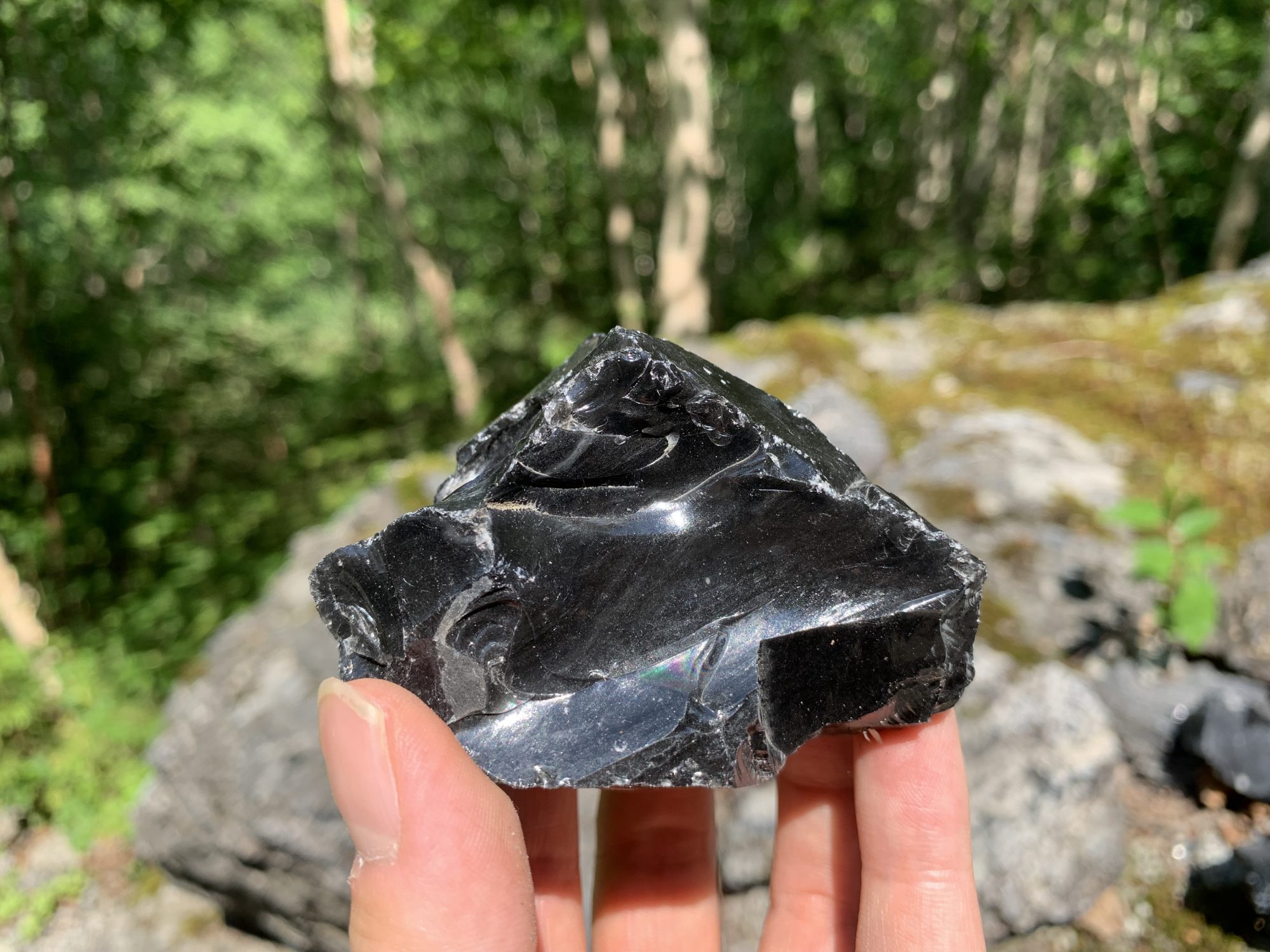A Tale of the Earth and People Woven by Obsidian
Obsidian, a natural glass produced by volcanoes

There is a type of rock called obsidian. It is pitch black and uniquely lustrous. If you break it, its edges will be sharp, and it will look like it could cut you at any moment. If you hold up a thinly-sliced chip of obsidian to the sun, you will notice that you can see right through it.
Obsidian is a rock born out of volcanic activity. This rock was made when highly viscous magma cooled and hardened, but its biggest difference with other rocks is that it is mostly made from glass.
The Shirataki area of Engaru Town, Hokkaido, is home to Japan’s largest obsidian source area. Why did so much obsidian form in this place? Why did volcanic eruptions happen in this place? Why is glass formed by volcanic activity?
Unraveling this mystery will give us clues to understand the formation of Hokkaido and the Japanese islands and about the past activities of the earth. Shirataki Geopark is the right place to learn about the past activities of the earth with the beautiful stone obsidian as a guide.
Obsidian that people sought 20,000 years ago

Places that retain traces of past human life are called “sites.” Over one hundred sites have been discovered in the Shirataki area of Engaru Town, most of which date back to around 20,000 years ago. Most of these sites are found at the bases of mountains that have obsidian.
Because it can be turned into a sharp blade just by breaking, obsidian was treasured around the world as a material for stone tools. Clumps of obsidian acquired from inside the mountains have been excavated from sites in the Shirataki area, thereby showing that these sites produced large volumes of stone tools. Furthermore, scientific analyses have shown that stone tools made from Shirataki obsidian traveled as far north as Sakhalin and as far south as the Niigata and Yamagata prefectures.
Why did people 20,000 years ago want obsidian so badly? Why did they need to travel to such a faraway place? One of the keys is climate change, phenomena that we are confronting today as well.
At Shirataki Geopark, you can learn about the lives of people in the past as they survived a changing environment and wove their lives together, thereby shaping who we are today.
